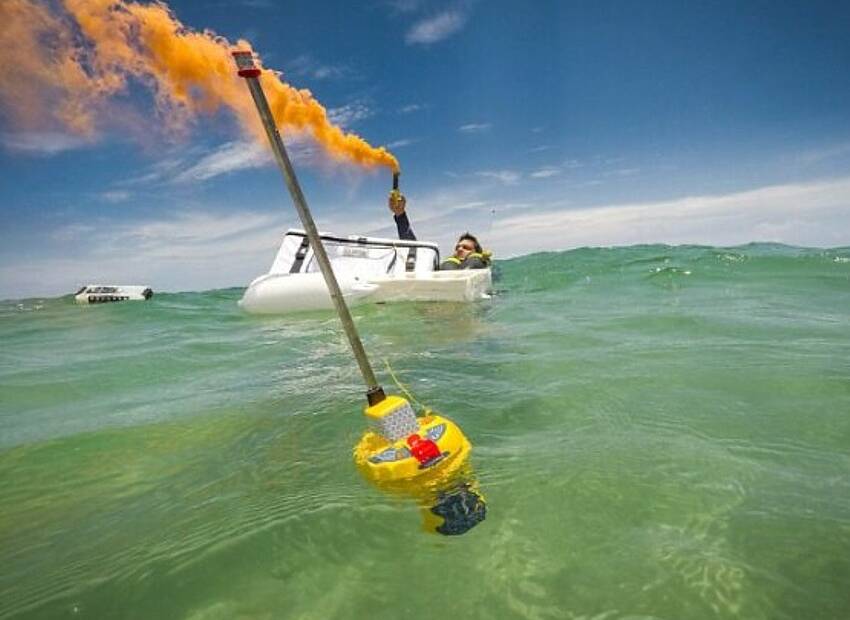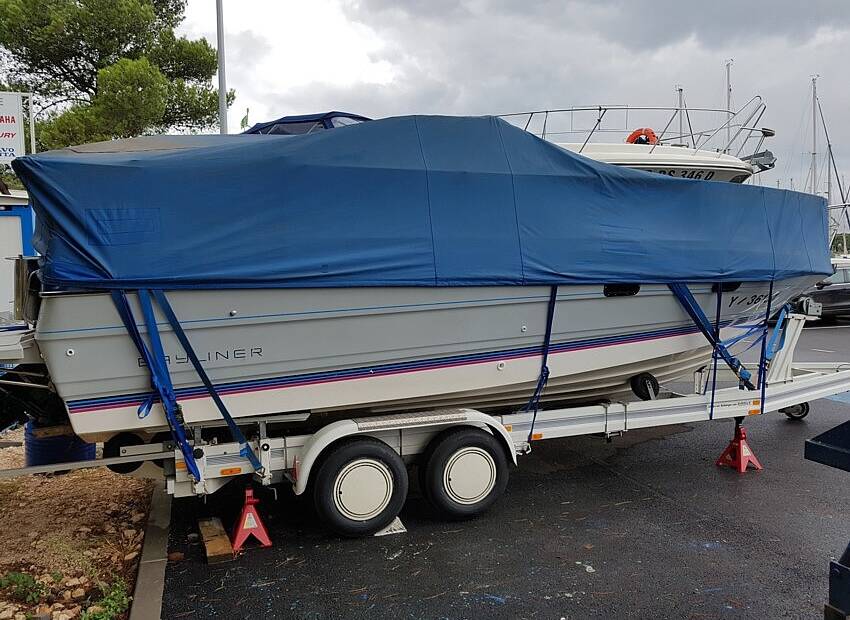Wind, sun, rain and dirt combine like gangbusters to attack your boat sails. Save money with these seven sail saving tips for savvy sailors.
1. Wash Your Sails with Fresh Water.
Keep salt and dirt particles from chafing sail seams. Remove mainsails once a year. Bathe them in a mild soap and water solution; then rinse with fresh water. Remove headsails twice a year and wash as described above. This keeps stitching strong and pliable.
2. Keep Sails Dry.
Dry boat sails before you cover them. Mildew spores grow on wet sails. Brush each side with a medium soft brush to loosen the mold spore. Soak the stained area in a 1% solution of Clorox and water for 2-3 hours. Sailmaker Dan Neri cautions never to use bleach on nylon spinnaker sails; it could eat through the sail cloth!
3. Protect Resin Coating.
Keep sails folded and stowed to protect the surface coating. Most sails use resin on the surface to help the sail keep her shape. But this coating breaks down without care. On cruising mainsails, dry the sail; then flake it over the sailboat boom. Cover with a sail cover. On furling headsails, replace the sacrificial leech cover when worn. On hank-on headsails dry and fold the sail accordion-style. Then, bag the sail on deck or stow below.
4. Use Soft Hand Cruising Boat Sails.
Ask your sailmaker for a "soft hand" sailcloth, if you are going distance or coastal cruising. This cruising boat sail cloth contains only the smallest amount of resin. You can stuff these sails into a bag without fear of resin coat breakdown.
5. Catch Batten Chafe Early.
Make batten pockets your first stop when you inspect the mainsail. Sailmakers say that batten pocket repairs make up a large portion of their business.
Have your sailmaker reinforce each pocket with an additional row of stitching. If you use full length battens, inspect batten hardware at the luff. Before bagging a mainsail, be sure to remove battens to prevent punctures.
6. Inspect Stitching and Cloth for Chafe.
Examine zigzag and straight sewing stitches for wear or chafe along sail edges and panels. On mainsails, mark worn areas near the leech and have your sailmaker add spreader patches. Check across the sail for broken sewing stitches. Circle worn areas with a pencil and repair right away. On headsails, look for chafed areas along the foot. The headsail foot takes a beating from tacking. Check seam stitching throughout the headsail. Circle worn areas with a pencil and repair to increase sail life.
7. Check Sail Attachment Hardware.
Keep sail hardware strong and in like-new condition. Broken, chipped or worn hardware could fail and cause the sail to rip across a seam. On mainsails, check headboard, tack and clew rings. Then check luff slugs and slides for cracks, missing shackles or deformity. Don't hoist the mainsail until you have replaced damaged hardware.
On roller furling headsails, innspect head and tack thimbles, and clew rings for wear or chafe. Remove the sail from the forestay extrusion to check for luff chafe. Repair worn areas right away to prevent further damage. On ahank-on headsails look for chafe in the corners and then inspect piston snaps and grommets. Lubricate corroded piston snaps with a drop of light machine oil. Work the piston in and out to free it of corrosion.
Your sails take it on the chin, in the harsh environment of sun, wind and sea. With a bit of care, you'll be rewarded with longer sail life, saving you a small fortune in sail repairs.
Want Instant Access to 1000+ Sailing Tips Articles Like This?
>> Click Here to Find Out More! <<
Captain John
Author of "Seamanship Secrets"
Website: http://SkipperTips.com
"Be the Skipper You Want to Be!"
Email: captainjohn@skippertips.com






















